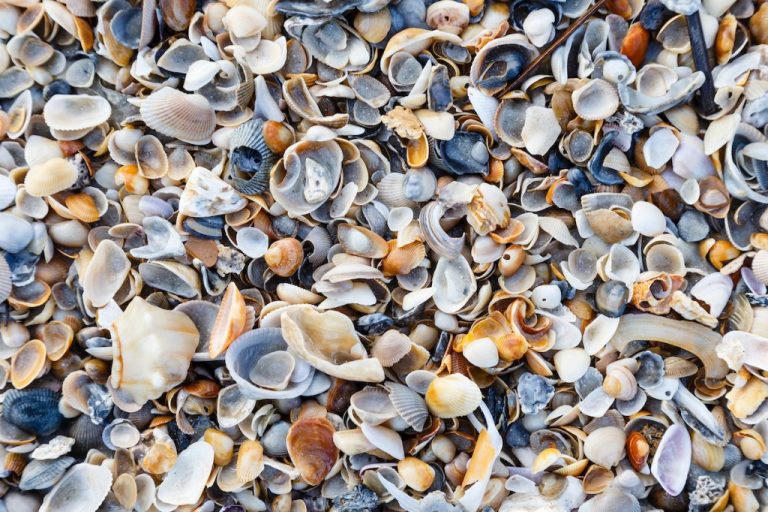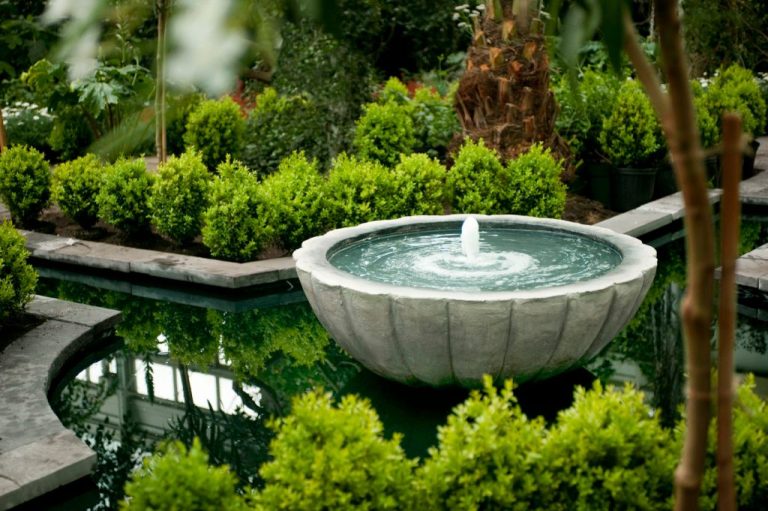Mediterranean Courtyard Garden Design: Intimate And Inviting Spaces
A Mediterranean courtyard garden is an intimate outdoor space, usually surrounded by the walls of a home or other buildings. Courtyard gardens have a long history in Mediterranean regions, dating back to ancient times.
Courtyards were essential features in homes of ancient Greek and Roman civilizations. They served as outdoor living areas where inhabitants could find reprieve from the hot Mediterranean climate. Courtyard gardens were designed with paving, potted plants, water features like fountains and pools, and shade structures. These ancient Mediterranean people valued outdoor living and designed their homes and gardens accordingly.
Over centuries, the tradition of courtyard gardens was adopted in countries across the Mediterranean basin and evolved to reflect various cultural influences. They remain a quintessential landscape feature of Mediterranean architecture and design.
Climate Considerations
The Mediterranean climate is characterized by mild, wet winters and hot, dry summers. This climate pattern is found around the Mediterranean Sea and in parts of California, central Chile, southwestern Australia and southwestern South Africa (Sharon Hull, 2010). Plants adapted to the Mediterranean climate are extremely drought tolerant and able to withstand long periods without rainfall in the summer.
When designing a Mediterranean courtyard garden, choose plants that can survive on little water during the dry season, such as lavender, rosemary, thyme, sage, oleander, and succulents. Mulch flower beds and the bases of plants to help retain moisture in the soil. Select porous, permeable hardscape materials like gravel, decomposed granite, brick, or flagstone to allow rainwater to penetrate and minimize runoff (Sharon Hull, 2010). These strategies will reduce water usage while creating an authentic Mediterranean oasis.
Layout and Spatial Planning
The layout of a Mediterranean courtyard garden focuses on creating intimate spaces within a compact area. Geometric shapes like circles, squares, and rectangles help to divide the courtyard into well-defined “rooms” for different functions. This allows you to maximize the garden’s limited footprint.
Common layout features include a central water fountain or focal point surrounded by paved gathering areas. Shaded seating nooks tucked into alcoves create an intimate feel. The use of screens, trellises, potted plants, and stepping stones help delineate separate spaces while maintaining an interconnected flow.
Planning sight lines and view corridors is also important in a small courtyard. You want to lead the eye through the space, revealing different garden scenes as you walk through. Using screens or partial walls to create a sense of mystery entices visitors to explore the courtyard.
Overall, Mediterranean courtyard gardens rely on careful spatial planning and geometric shapes to craft intimate spaces within a compact footprint. This allows you to create a private oasis that feels much larger than its actual size.
Water Features
Water is an essential element in a Mediterranean courtyard garden. The climate lends itself perfectly to various water features that provide soothing sounds, visual interest, and cooling effects.
Fountains are a classic choice for Mediterranean gardens. Options range from simple tiered fountains to more ornate sculptural pieces. The sound of moving water creates a serene backdrop. Fountains can be placed centrally as a focal point or incorporated along the garden’s perimeter.
Pools also make an inviting water feature. Mediterranean gardens often integrate rectangular pools, perhaps with a surrounding stone coping. For smaller spaces, rounded pools work well. The pool’s edge can act as additional seating space within the garden’s design.
Container water gardens offer a flexible option. Plants are grown in pots partially submerged in water, sometimes with a small fountain incorporated. The container can be moved to different areas of the garden to change the look. Mediterranean plants like cyperus and calla lilies thrive in these mini-ponds.
Source: My Garden Journal
Plant Palette
The ideal plant palette for a Mediterranean courtyard garden emphasizes drought-tolerant species that thrive in hot, dry conditions. Some classic Mediterranean plants to incorporate include:
Lavender
Lavender is one of the most iconic Mediterranean plants, with its aromatic gray-green foliage and vivid purple flower spikes. There are many lavender varieties to choose from, like English lavender (Lavandula angustifolia) and Spanish lavender (Lavandula stoechas). Lavender thrives in full sun and well-drained soil. It looks beautiful in borders, herb gardens, and containers. According to Mediterranean Plants to Grow in Your Garden, lavender’s fragrant flowers and foliage act as “living potpourri.”
Olive Trees
Olive trees (Olea europaea) add a quintessential Mediterranean look with their gnarled trunks and silvery green leaves. They require well-drained soil and full sun. Olive trees take some time to reach maturity, but they can live for hundreds of years. The trees produce edible olives and complement other sun-loving Mediterranean plants.
Ornamental Grasses
Ornamental grasses like fountain grass (Pennisetum) and Mexican feather grass (Stipa tenuissima) thrive in hot climates. Their slender leaves and swaying blooms add texture and movement to the garden. Many ornamental grasses are drought tolerant once established. They work well along borders, in rock gardens, and in containers. Their wispy seed heads provide visual interest through fall and winter.
Citrus
Citrus trees like lemon, lime, orange, and grapefruit flourish in Mediterranean courtyard gardens. They need full sun, well-drained soil, and protection from frost. Citrus flowers provide spring blooms, while the fruits add a pop of color. Dwarf citrus varieties are ideal for containers. According to Create a Mediterranean Garden from SummerWinds Nursery, citrus trees “evoke the essence of Mediterranean-inspired landscapes.”
Hardscaping Materials
Hardscapes like stone, tile, and gravel are integral elements that help define the look and feel of a Mediterranean garden. These materials are chosen for their natural, earthy qualities and ability to withstand the region’s intense sun and heat.
Stone is one of the most iconic Mediterranean hardscape materials. Walls, terraces, pathways, and other structures are often built from local stone such as warm-toned sandstone or limestone. The natural rustic texture and appearance helps blend hardscaping seamlessly into the landscape.
Clay tiles are another quintessential Mediterranean hardscape material, used for everything from roofs to floors, patios, garden accents. Terracotta tones are common and complement the earthy plant palette.
Finally, gravel and pebbles are used extensively for pathways, patios, and as mulch. Gravel creates a loose, informal texture and helps reflect sunlight to keep plantings from overheating.
Ornamentation
Ornamentation plays an important role in Mediterranean courtyard gardens, adding visual interest and character. Typical ornamental elements include:
Urns
Terracotta urns are a hallmark of Mediterranean style. Placed on pedestals or on the ground, urns make excellent planters for small trees, flowering plants, and trailing vines. Matching urns can flank entries or line garden pathways. Terracotta urns come in a variety of classical shapes and sizes, with decorative handles and motifs. See a nice selection at https://www.amazon.com/Mediterranean-Garden-Accessories/s?k=mediterranean+garden+accessories.
Statuary
Statues and sculptures bring Mediterranean ambiance to any courtyard. Look for classically-inspired, figural sculptures as well as animal statues like lions, birds, turtles, and dolphins. Weather-resistant materials like stone, concrete, and resin are best. Opt for neutral hues that complement the surroundings. Place statues in alcoves, on pedestals, or tucked into plantings. See options at https://www.amazon.com/Yardwe-Mediterranean-Ornaments-britannic-Miniature/dp/B0CB8P79B6.
Trellises
Decorative trellises support vining plants while adding visual appeal. Iron, wood, or composite trellises come in arched, grid, diamond, and circular patterns. Incorporate trellises along walls, fences, or pergolas to create a sense of enclosure. Vines like grapes, jasmine, and bougainvillea can be trained up trellises to add color and soften hardscape surfaces.
Furnishings
The furnishings selected for a Mediterranean courtyard garden add warmth and charm. Opt for furniture with intricate detailed designs, natural materials, graceful curves, and ornate accents that evoke the relaxed elegance of Mediterranean style.
For benches, look for stone, wrought iron, or wood options with delicate metalwork, tile or mosaic insets, scrolled arms, and comfortable cushions in sunny yellows, deep blues, or earthy terracottas. Curved benches invite conversation in an intimate setting.
Tables can provide a focal point, like a hand-painted tile-top table or rustic farmhouse style. Choose chairs with scrolled backs, woven seats, or turned legs. Wrought iron furniture with scrolled designs brings an airy, romantic feel.
Select furnishings with artisan craftsmanship and Old World charm to cultivate the welcoming ambience of a Mediterranean courtyard garden. Opt for lightweight, movable pieces that allow flexibility in rearranging the space as needed. See examples at https://www.1stdibs.com/buy/mediterranean-patio-furniture/.
Lighting
Lighting is an important design element that can help set the mood and ambiance of a Mediterranean courtyard garden. Strategic lighting placement creates an intimate atmosphere for relaxation in the evenings.
Hanging lanterns are a classic choice for Mediterranean-style gardens. Wrought iron or ceramic lanterns with simple, elegant designs work beautifully. Hang lanterns from trees, walls, pergolas, or fences to softly illuminate seating areas. Citronella candles can be placed inside lanterns to provide ambient light and repel insects on warm nights.
Low-voltage path lights are ideal for safely illuminating garden walkways at night. Opt for path lights with a weathered bronze or antique brass finish to complement the Mediterranean style. Place them along steps, winding pathways, and the garden perimeter.
Upward facing accent lights strategically aimed at trees, architectural elements, and plants create dramatic shadows and highlights. Use accent lighting to showcase specimen trees, a focal point water feature, or textural planting compositions. Moonlighting or well-directed flood lights work well for accent lighting.
Conclusion
A Mediterranean-style courtyard garden offers an intimate and inviting space to relax and soak in the ambiance. This design style incorporates several key elements to achieve its charming aesthetic. By considering the climate and layout, incorporating thoughtful water features, selecting a compatible plant palette, using appropriate hardscaping materials, adding tasteful ornaments, choosing comfortable furnishings, and lighting the space appropriately, you can create a courtyard garden that feels like a cozy Mediterranean retreat.
The inward orientation, enclosed layout, and human scale of Mediterranean courtyard gardens create enveloping spaces that invite you in. Thoughtful plantings, textured hardscapes, the soothing sound of water, and strategic lighting come together to form a sensory experience that delights the eyes, ears, nose and soul. A successful Mediterranean courtyard garden is an oasis that provides refuge, inspires serenity, and draws you into the nuances of its intimate spaces.




